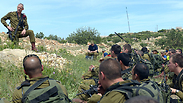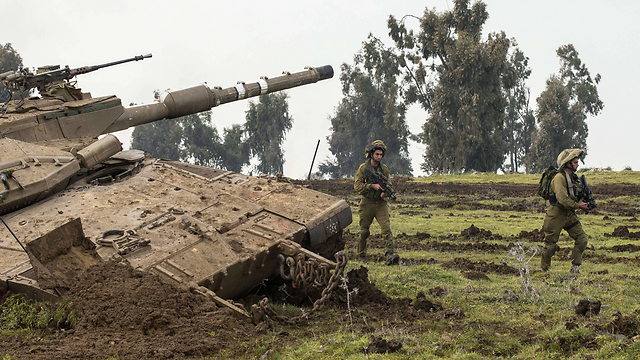
IDF to create smaller, better-trained reserve force
Military decides to improve ground capability by letting go of thousands of reservists while increasing training for the remainder; engineering capabilities to deal with tunnel threat to be significantly increased.
Inquiries on Operation Protective Edge repeatedly showed deficiencies in the Ground Forces ability to deal with the Hamas tunnels threat in particular, as well as the terror organization's activity in general. A senior officer in the Ground Forces said that "it must be honestly said that the Ground Forces were not sufficiently prepared for the war. Instead of denying that, we have to improve the situation."
Chief of Staff Eisenkot, who was briefed on the matter before beginning his tenure, announced a significant budget increase for the Ground Forces in order to resolve the issue before another conflict erupts, instructing Deputy Chief of Staff Yair Golan to divert funds to the Ground Forces as part of an internal re-organization in the army.
The IDF decided to increase training for infantry and armored units and has forbidden deploying units on operational duty at the expense of training - unless given special authorization.
Eisenkot's next task will be to convince the political echelon that it is necessary to purchase armored vehicles and protection systems for Ground Forces.
The most dramatic change being made in the Ground Forces involves the reservists. Four months ago, State Comptroller Joseph Shapira released a sharply-worded report on the condition of the Ground Forces' reserve troops, which he said were not sufficiently trained and equipped to deal with a future conflict. The report stated that because of budget cuts, Ground Forces can only fund training for 80 percent of reserve soldiers.
"In such a situation," warned the comptroller, "there is no certainty that reserve soldiers called up during an emergency will be those who received the required training. The comptroller criticized outgoing chief of staff Benny Gantz and Defense Minister Moshe Ya'alon, saying Gantz had failed to press Ya'alon on the preparedness of the reserves, and that the defense minister had not approved the required level of preparedness
The comptroller advised the new army chief to set a "minimum budget" to maintain the Reserve Force's competence, noting such budget should not depend on the size of the overall defense budget.
As a result of the conclusions, based on a report by Brig.-Gen. Roni Noma – who was at the head of a special committee to examine the competence of reserve troops – resulted in a decision to reduce the amount of reserves while giving the remaining forces considerable training, thus creating a smaller but more well-trained reserve force.
The army has thus decided to sharply reduce the number of reserve units, from a standard that sometimes stood at 200 percent of the allocated number and usually stood at 160 percent to a reduced standard of 120 percent at most.
Thousands of reservists aged 31-35 will be released. At first they will not be called up for training or employment, and then released from reserve duty. Battalion and brigade commanders in the reserves will release soldiers from their units, and those remaining will receive lengthier training. Two battalions – Harel and Negev – were the first two to implement the decision, with their training exercise being extended from a week to two weeks.
Another issue Eisenkot must face is the terror tunnels threat. While the Yahalom unit – IDF's elite combat engineering unit – was able to deal with the tunnels during Operation Protective Edge, it was neither large enough nor sufficiently equipped to simultaneously handle scores of tunnel openings. As additional technological solutions have been developed since Operation Protective Edge, the army decided to immediately enlarge the unit – nearly doubling its number of fighters, reserve officers, and technological tools – in order to allow it to respond on two fronts, if necessary.
While in the past all things related to subterranean combat was the province of specialist units, the army has come to realize that every infantry unit needs an independent capability to handle threats from underground. Bases for new recruits in the Golani, paratroopers, and Nahal brigades have built new infrastructure to train soldiers for fighting under the conditions encountered last summer. Another army directive involves decreasing the number of regular troops operating in the West Bank, Gaza, and Lebanon and sending them to training.











